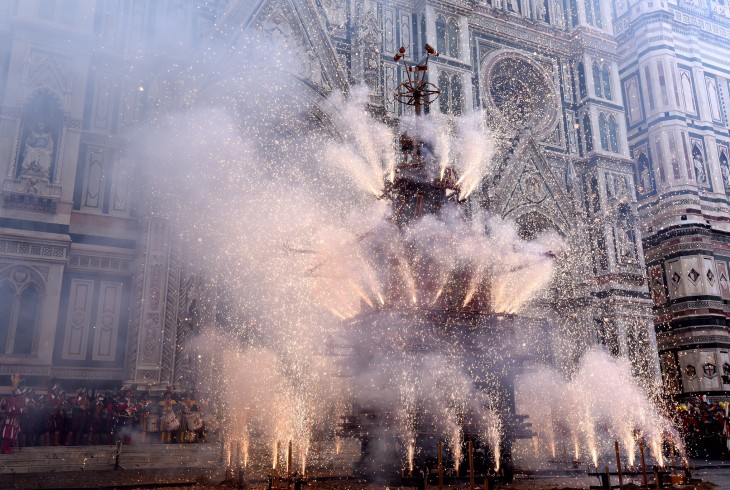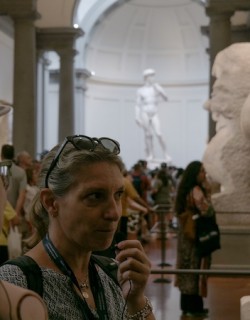By Brenda Vaiani
Once a year, on Easter Sunday, Florence ignites its past through a ceremony where faith and spectacle merge in a dazzling display. Picture a towering wooden cart, centuries old, adorned with intricate decorations and packed with fireworks, standing in the city's heart, waiting for its moment to erupt in a breathtaking explosion of fire and light. It's a tradition you won't want to miss if you are in Florence this Easter.
This is the Scoppio del Carro—the Explosion of the Cart—a ritual that, for over nine centuries, has held the power to dictate Florence's fortunes, for better or worse. And, as often happens with Tuscan traditions, superstition is never far behind. Some bring salt, believing it wards off bad luck. But this event is only the final act of a much larger story, deeply woven into Florence's past, stretching back nearly a thousand years: it all began during the Crusades when Florence was reclaiming its splendor under the protection of Matilde di Canossa. This ceremony, deeply rooted in faith, has evolved into a folkloric event admired by locals and visitors. But before we dive into how it unfolds, let's take a step back—because its origins read like the plot of an epic film.
You can watch a news report in Italian below to witness the event, but be sure to read on to understand the true meaning and historical significance of this wonderful tradition.
The Origins: A Legacy From the First Crusade
The story begins in 1097, when, a leader of the First Crusade, Goffredo de Buglione, set out for the Holy Land. Over time, his legacy grew into legend, so much so that Dante Alighieri placed him among the righteous warrior spirits in the sphere of Mars in Paradiso, Canto XVIII. Alongside him was a young and fearless Florentine knight, Pazzino de' Pazzi, whose name would become forever tied to one of Florence's most enduring traditions.
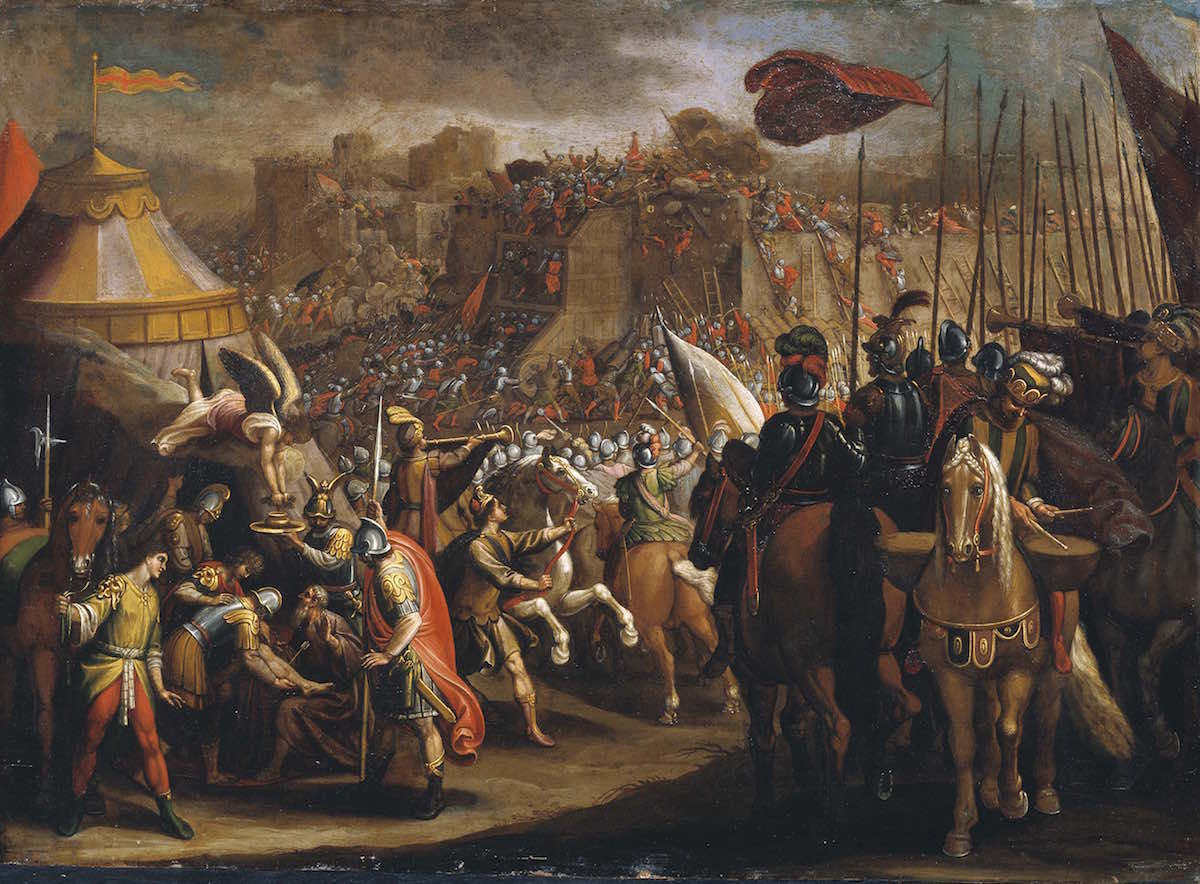
Godfrey of Bouillon Being Treated by an Angel by Antonio Tempesta 1555-1630
According to tradition, Pazzino became renowned for his legendary climb of the walls of Jerusalem, scaling them with his bare hands. He is said to have been the first knight to breach the city, defeating and scattering the defenders along that section of the walls, thus clearing the way for the Crusaders to take control of Jerusalem. He then planted the Christian banner, marking the symbolic conquest of the city. After the successful siege of Jerusalem in 1099, Goffredo became the first ruler of the newly established Crusader State, the Kingdom of Jerusalem. However, he refused the title of 'King,' believing that the true King of Jerusalem was Christ, and instead took the title of Defender of the Holy Sepulchre.
The Three Sacred Stones: A Gift That Ignited a Tradition
In recognition of Pazzino's bravery, legend has it that Goffredo bestowed three fragments of stone from the Holy Sepulchre of Chris upon him. When Pazzino returned to Florence in 1101, he brought these sacred relics. The rocks were first kept at the Pazzi family palace before finding their home in the Church of Santi Apostoli in the tiny Piazza del Limbo. Over time, they became more than relics—they were transformed into the tools that would ignite Florence's sacred Easter fire, a tradition that still endures today. The fire, distributed in the Cathedral, was carried home by the Florentine people to relight their hearths, reinforcing the deep connection between faith and everyday life.
But why these stones? It is said that on Holy Saturday, after the liberation of Jerusalem, the Crusaders gathered in prayer at the Church of the Resurrection. There, they kindled a sacred fire from the flames of the Holy Sepulchre, passing it among themselves using torches and candles. Inspired by this act, Florence embraced the custom of using the sparks from Pazzino's three stones to ignite its own Easter fire, forging a lasting link between the city's celebrations and the legendary actions of the Crusaders. By the end of the 12th century, this ritual was firmly established, becoming a cornerstone of Florence's Easter traditions.
Later, the Holy Fire began to be transported in an exquisite Renaissance silver lantern, which is still preserved in the Church of Santi Apostoli alongside the sacred stones. Today, the fire is lit on Holy Saturday on the Cathedral's Cathedral's parvis, and the ancient reliquary lantern is carried in procession the following day. It was then transported to the Duomo on a cart, which, over the centuries, became increasingly elaborate—first adorned with torches, then enhanced with rockets and fireworks—evolving into the grand spectacle that continues today.
The Brindellone: Florence's Monumental Cart of Sacred Fire
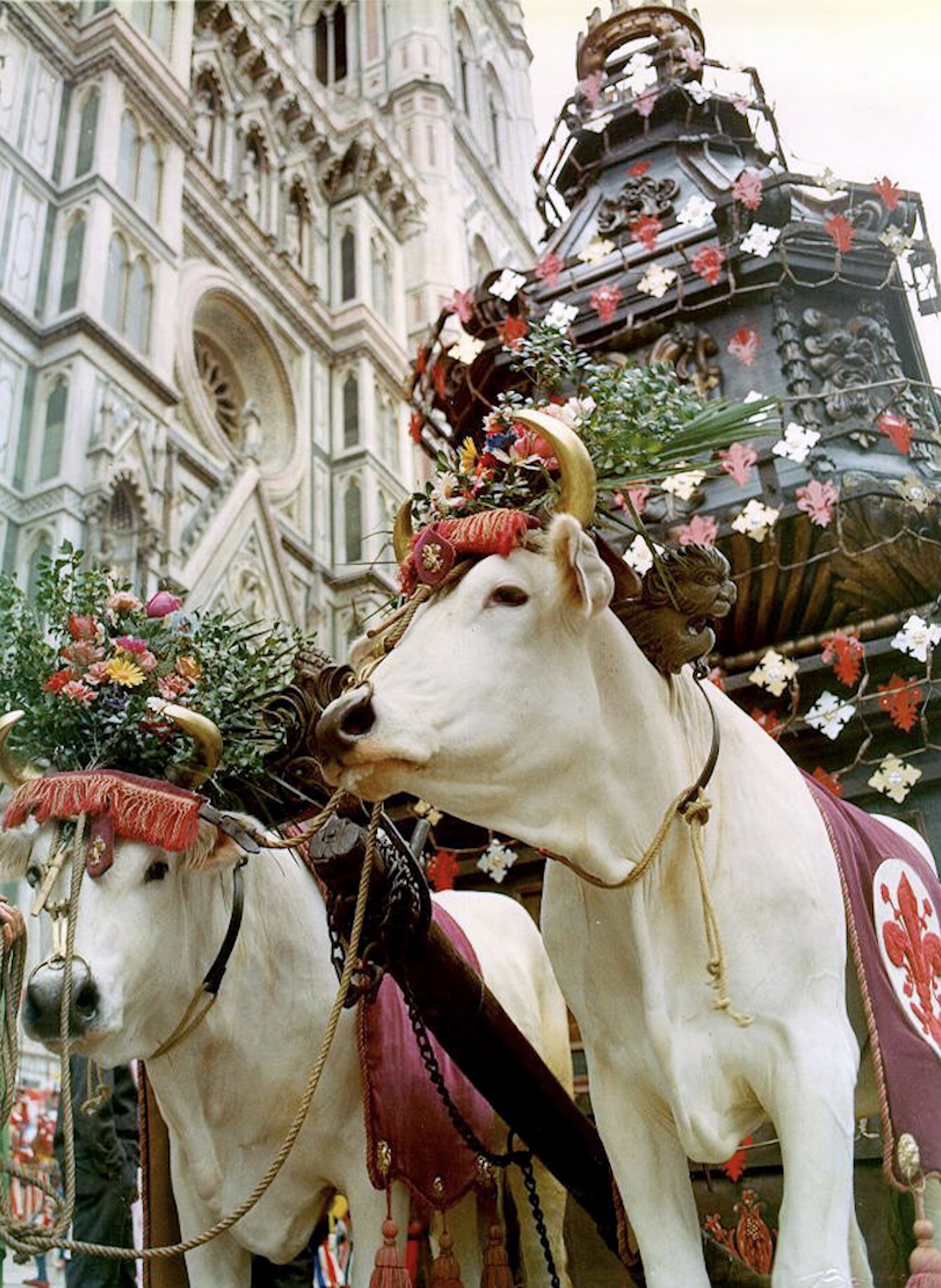
By the 17th century, the tradition had become more elaborate. The powerful Pazzi family formalized this tradition by constructing the monumental Carro di Fuoco, the Fire Cart, a towering, three-tiered wooden cart that would symbolically carry and distribute the blessed fire to the entire city. Affectionately known as Il Brindellone, this massive structure was designed by the great architect, master of theater, stage design, and pyrotechnic effects, Bernardo Buontalenti, and remains at the heart of the ceremony.
The brindellone in Florentine slang describes a person who is tall, ungainly, somewhat unsteady, and even a bit shabby—yet regarded with a certain affectionate sympathy. The association between this term and the cart dates back to a celebration held by the Florentine Mint in honor of its patron, Saint John the Baptist. On June 24th, a hay cart would leave from the Mint's tower and travel through the city, carrying a man dressed in rags representing the saintly hermit. This figure, dubbed the brindellone due to his swaying movements—especially after indulging in the celebratory feast—became synonymous with ceremonial carts in Florence, a tradition that still endures.
Every Easter Sunday, the Brindellone emerges from its storage location in Via Il Prato, where it is kept for the rest of the year. Adorned with intricate decorations and loaded with fireworks, a pair of majestic white oxen draw it, their horns wreathed in flowers. Accompanied by a grand procession of 150 costumed guards, musicians, and sbandieratori (flag throwers), the cart makes its way through Florence, stopping briefly in Piazza della Repubblica for an exhibition by the Uffizi Flag Throwers.
Finally, it arrives at its destination—Piazza del Duomo, the beating heart of Florence. And just then, with the Brindellone in place and the city holding its breath, another tradition unfolds. Following a 17th-century custom, the matchups for the semifinals of Calcio Storico Fiorentino are drawn mere minutes before the explosion, adding another layer of anticipation to this extraordinary day.
The Moment of truth: the explosion that decides Florence's fortune
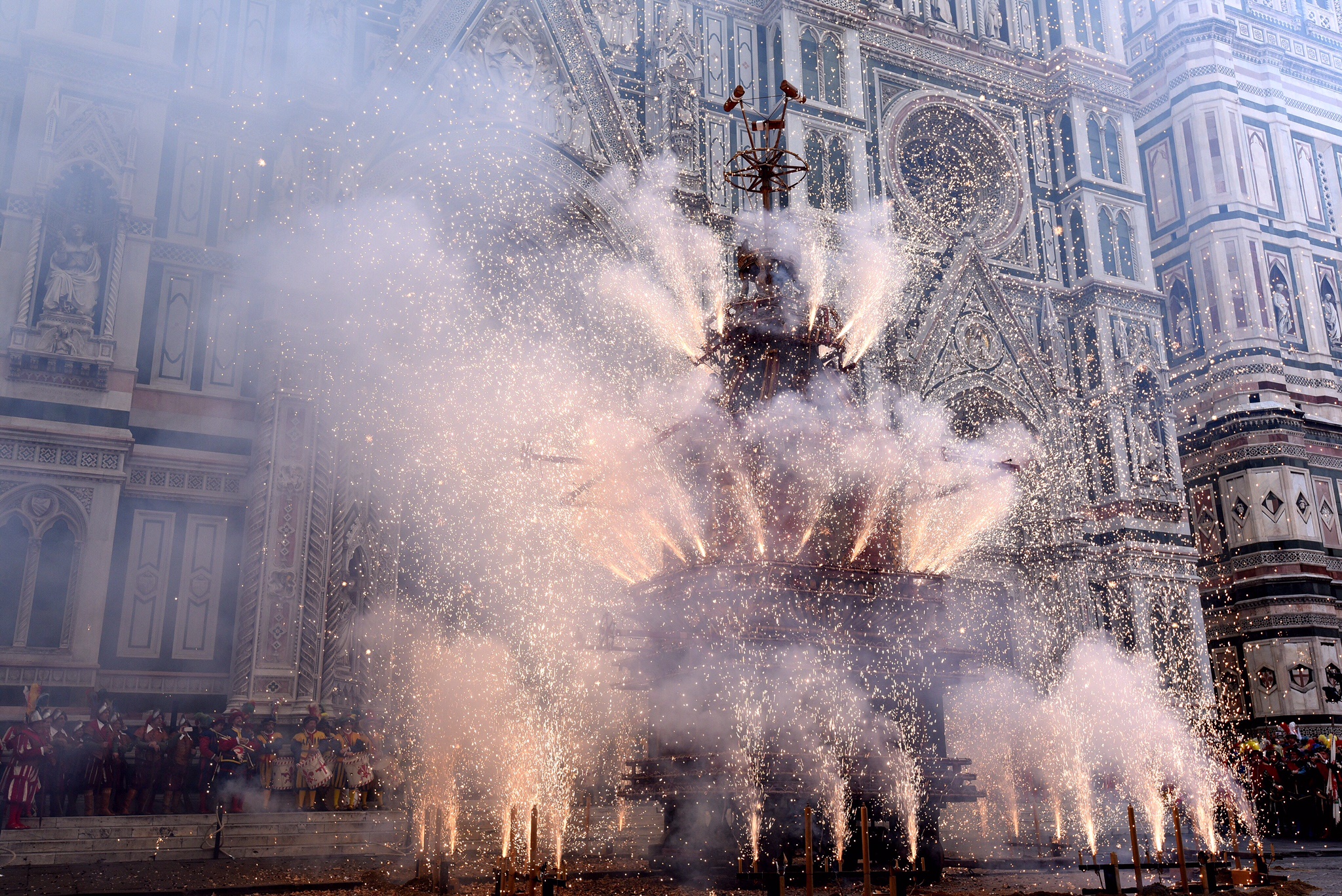
At precisely 11:00 AM, the grand moment arrives. Beginning in 1515-1520, under the pontificate of Pope Leo X (Giovanni de' Medici), the traditional Scoppio del Carro took its current form, following the same ritual that continues today. The Brindellone is between the Baptistery of San Giovanni and the Santa Maria del Fiore Cathedral. A seven-meter pole is erected in front of the High Altar inside the Cathedral, connected by a steel cable to the cart outside. Suspended on this cable is a small, rocket-shaped dove—the Colombina—symbolizing the Holy Spirit.
During the Mass, as the Gloria in Excelsis Deo is sung, the Archbishop of Florence lights the Colombina with the Holy Fire, sending it whistling swiftly along the cable, down the nave of the Cathedral, through the central portal, and finally striking the cart in the square, triggering an explosion of dazzling fireworks. The fireworks display consists of rockets, firecrackers, spinning wheels, and fountains of light arranged across the three levels of the cart, igniting in a dramatic crescendo from bottom to top.
The crowd watches with anticipation as the spectacle unfolds. According to tradition, the coming year will bring prosperity if the Colombina completes its flight smoothly and returns to the High Altar without incident. If it falters, however, it is considered an ominous sign for Florence. For centuries, Florentines have looked to the Colombina's flight for divine omens, interpreting its success or failure as a prediction for the upcoming season. Farmers, in particular, once believed that its trajectory foretold the quality of the harvest, making this ancient ritual not only a religious spectacle but a moment steeped in hope and superstition.
One tradition sparks another.
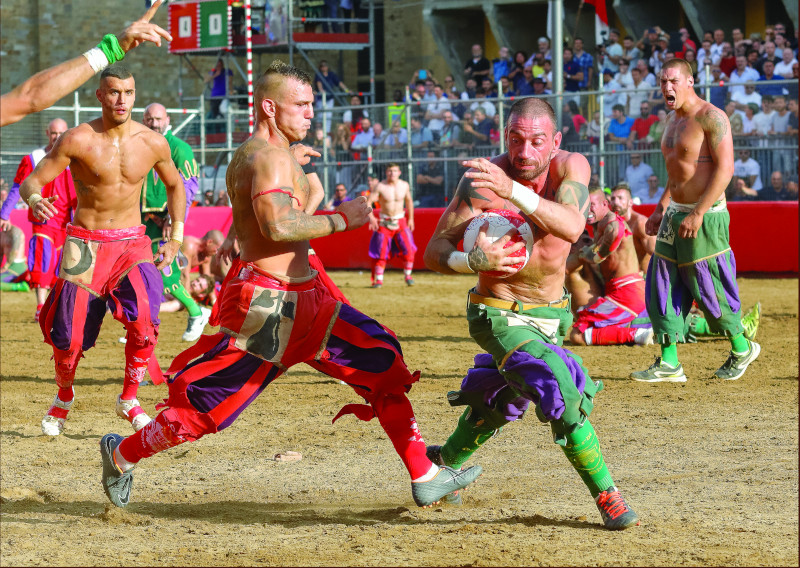
The tradition is also intertwined with another great Florentine spectacle—Calcio Storico Fiorentino, the city's historic football tournament, born in 1530 as an act of defiance against the Spanish occupation of Florence. As the last sparks from the Scoppio del Carro fade, another moment of anticipation takes center stage. The upcoming Calcio Storico tournament matchups are drawn just minutes before the explosion, adding another thrill to a day already steeped in history and tradition.
If you want to take the stress out of your trip to Florence and make the most of your time in the city, our Day in Florence Tour offers a great option to enjoy the city with the insights of a knowledgeable guide.
MORE GREAT CONTENT FROM THE BLOG:
- Everything You Need to Know to Visit Florence in 2024
- The Best Things to Do in Florence in 2024
- Where to Stay in Florence
- The Best Tours of Florence
- The Best Museums in Florence
- What to See in the Uffizi Gallery
- The Best Street Food in Florence
- Where to See Michelangelo in Florence
Through Eternity Tours offer a range of insider itineraries in the City of the Medici, so if you’re taking a trip to Florence this year check out our website or get in touch with our expert travel planners today!
